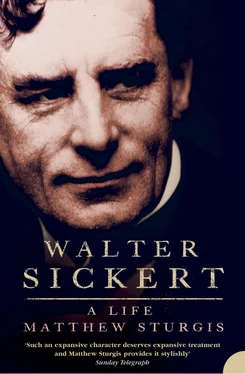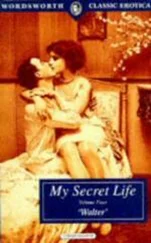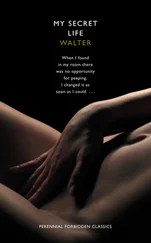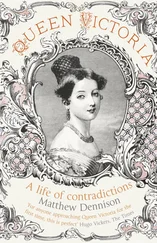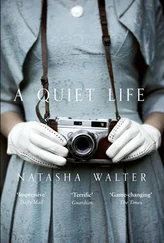1 ...8 9 10 12 13 14 ...56 Mrs Sickert conformed to what she considered were the established modes of English life. She took the children to church on Sunday mornings, walking them off to St Thomas’, Paddington, a little iron church off Westbourne Grove. 27 It was a temporary structure, but the vicar, the Revd John Alexander Jacob, had a reputation as a preacher (his Building in Silence, and Other Sermons was published by Macmillan in 1875). Oswald Sickert did not attend, although, as a ‘tolerant minded agnostic’, he accompanied the family as far as the corner nearest the church and often met them coming out. The young Sickerts’ own involvement with proceedings was only slightly more engaged. Although they learnt the ‘Collect for the day’ and were taught their catechism by Mrs Sickert, their approach was so formal that, when asked ‘What is your name?’ they were liable to reply, ‘N or M as the case may be’. 28 Walter showed no inclination towards the spiritual side of life. But churchgoing did have its social compensations. The Carters attended St Thomas’; and the Sickerts as they trooped up Holland Walk would also encounter the Raleighs, a lively family of one boy and five girls, children of the Revd Alexander Raleigh, who lived nearby. 29
The move to England had a particular impact upon Oswald Sickert’s position. From being a cosmopolitan figure in a cosmopolitan milieu, he found himself a foreigner in an essentially English one. English, though he spoke it perfectly, was not his native – or even his second – tongue. Moreover, he no longer had a job or an income. Mrs Sickert wanted to make over to him the allowance that she received, but the terms of her trust made that impossible. Instead she drew her cheque every month and then handed over the cash to her husband, ‘so that she might have the pleasure of asking him for it, bit by bit’. Helena vividly recalled the playing out of this little charade: ‘It was her luxury to pretend he gave it to her, and his eyes would smile at her as he drew out his purse and asked, “Now how much must I give you, extravagant woman?” And she would say humbly, “Well, Owlie, I must get some serge for the little ones’ suits, and a new hat for Nell, and I want to bring back some fish. Will fifteen shillings be too much?” So she would get a pound and think how generous he was.’ 30 The fiction was a happy one but it could not quite obscure Oswald’s new, dependent status.
There were, in theory, some advantages to his new condition. Freed from the necessity of hackwork, he could rededicate himself exclusively to painting. London was a not unpropitious place for such a project. Compared to Munich, where the Kunstverein had exercised a virtual monopoly on exhibitions, there were several exhibiting groups and even a few commercial art galleries at which he could show. There were art collectors too. The example of John Sheepshanks had inspired several imitators, as the wealth generated by Britain’s ever expanding industrial and commercial imperium sought expression and dignity through art. With such patronage, artists were beginning to grow rich. The new mansions of Holland Park, with their lofty studio-rooms, were monuments to the fortunes being made in paint. 31
Although Oswald had a painting room in the house, he soon took on a separate studio in Soho Square as well. Soho was some distance from Notting Hill, but it was close to Gower Street, and Oswald would walk the three and a half miles to UCS each morning with his eldest son. The link between them was reinforced. Walter would show off to his father. One of the challenges he undertook was to learn by heart the exotic polysyllabic name of the Indian Maharaja whose tombstone stood in the churchyard they passed each day. (Over seventy years later Sickert was still able to rattle off the name: Maharaja Meerzaram Guahahapaje Raz Parea Maneramapam Murcher, KCSI.) 32 He was initiated, too, into his father’s professional world, accompanying him to buy materials at Cornelissen, the artists’ supply shop in Bloomsbury. 33 The daily excursions into town, however, also made Walter aware of his father’s semi-alien status in their new home. Whenever they passed the shop of the friendly local cobbler, the man, ‘thinking in the English way, that it was necessary to shout and explain things to all foreigners, however well they spoke English’, would point at his display of porpoise-hide bootlaces and ‘roar at the top of his voice, “Papooze’s ‘ide!”’ 34 Perhaps it was the embarrassment of this daily performance that first inspired the slight note of protectiveness that came to colour Sickert’s view of his father – a protectiveness always mingled with real admiration, piety, and affection. 35
The family maintained a European perspective. From the summer of 1870 onwards the unfolding drama of the Franco-Prussian war consumed their attention. Walter followed the rapid succession of French defeats in the pages of the Illustrated London News . It was a conflict that touched the Sickerts with painful closeness, setting familiar Germany against beloved France. Their sympathies lay entirely with the French. It was torture to Mrs Sickert when Dieppe was occupied by Prussian troops in December, and for Oswald when Paris fell at the beginning of the following year. French refugees became a feature of London life. Amongst the self-imposed exiles were several artists: Claude Monet came, and Camille Pissarro. The general exodus also brought a German painter – Otto Scholderer. After training at the Academy in Frankfurt, Scholderer had gone to Paris in 1857 and enrolled at the atelier of Lecoq de Boisbaudran. There he came to know Henri Fantin-Latour, Alphonse Legros, and other members of the Parisian studio world. He returned to Paris at the end of the 1860s, and in 1870 Fantin-Latour, whose great friend he had become, included his diffident red-bearded figure, standing behind Edouard Manet, in the group portrait, the Atelier des Batignolles . It is not clear whether he already knew Oswald Sickert before he came to London – he never studied at Munich, nor did the two men coincide at Paris – but they soon became friends. They had a shared love of music, and would often play together, either at Hanover Terrace or at the Scholderers’ house at Putney. 36
Such gatherings had a comfortably familiar air. In more ‘English’ society – though the Sickerts found many ready friends – there always remained the faint hint of ambiguity about their exact position. The Sheepshanks connection, so beneficial in all other respects, carried with it the taint of Mrs Sickert’s illegitimate origins – even if the details of those origins were not known to all and were often confused by those who were aware of them. (At least one friend supposed that Mrs Sickert was the natural daughter of John, rather than Richard, Sheepshanks. 37 ) Amongst most members of the ‘artistic’ world Mrs Sickert’s position would have counted for little, but on the broader social plane the possibility of affront and insult – if remote – could never be entirely forgotten. There clung, too, to the family and to the family home, a slight but distinct sense of difference – of foreignness. The Sickerts played German music, sang German songs, and had German books on their shelves. 38 They preserved the Munich habit of eating their ‘dinner’ at noon, and having only a light ‘tea’ or ‘supper’ in the evening – a fact that occasionally caused the children embarrassment when English visitors called. 39 The family, according with Continental custom, celebrated Christmas on the night of Christmas Eve, and did so in what outsiders considered a ‘high Germanic’ fashion. 40 These marks of otherness were small, but they were sufficient to give the Sickerts both a sense of closeness amongst themselves and of detachment from the world they found themselves in.
Читать дальше
